Thomas Van Vaerenbergh
A Statistical Analysis for Per-Instance Evaluation of Stochastic Optimizers: How Many Repeats Are Enough?
Mar 20, 2025Abstract:A key trait of stochastic optimizers is that multiple runs of the same optimizer in attempting to solve the same problem can produce different results. As a result, their performance is evaluated over several repeats, or runs, on the problem. However, the accuracy of the estimated performance metrics depends on the number of runs and should be studied using statistical tools. We present a statistical analysis of the common metrics, and develop guidelines for experiment design to measure the optimizer's performance using these metrics to a high level of confidence and accuracy. To this end, we first discuss the confidence interval of the metrics and how they are related to the number of runs of an experiment. We then derive a lower bound on the number of repeats in order to guarantee achieving a given accuracy in the metrics. Using this bound, we propose an algorithm to adaptively adjust the number of repeats needed to ensure the accuracy of the evaluated metric. Our simulation results demonstrate the utility of our analysis and how it allows us to conduct reliable benchmarking as well as hyperparameter tuning and prevent us from drawing premature conclusions regarding the performance of stochastic optimizers.
Separable Operator Networks
Jul 15, 2024Abstract:Operator learning has become a powerful tool in machine learning for modeling complex physical systems. Although Deep Operator Networks (DeepONet) show promise, they require extensive data acquisition. Physics-informed DeepONets (PI-DeepONet) mitigate data scarcity but suffer from inefficient training processes. We introduce Separable Operator Networks (SepONet), a novel framework that significantly enhances the efficiency of physics-informed operator learning. SepONet uses independent trunk networks to learn basis functions separately for different coordinate axes, enabling faster and more memory-efficient training via forward-mode automatic differentiation. We provide theoretical guarantees for SepONet using the universal approximation theorem and validate its performance through comprehensive benchmarking against PI-DeepONet. Our results demonstrate that for the 1D time-dependent advection equation, when targeting a mean relative $\ell_{2}$ error of less than 6% on 100 unseen variable coefficients, SepONet provides up to $112 \times$ training speed-up and $82 \times$ GPU memory usage reduction compared to PI-DeepONet. Similar computational advantages are observed across various partial differential equations, with SepONet's efficiency gains scaling favorably as problem complexity increases. This work paves the way for extreme-scale learning of continuous mappings between infinite-dimensional function spaces.
Invited: Neuromorphic architectures based on augmented silicon photonics platforms
Jul 07, 2024


Abstract:In this work, we discuss our vision for neuromorphic accelerators based on integrated photonics within the framework of the Horizon Europe NEUROPULS project. Augmented integrated photonic architectures that leverage phase-change and III-V materials for optical computing will be presented. A CMOS-compatible platform will be discussed that integrates these materials to fabricate photonic neuromorphic architectures, along with a gem5-based simulation platform to model accelerator operation once it is interfaced with a RISC-V processor. This simulation platform enables accurate system-level accelerator modeling and benchmarking in terms of key metrics such as speed, energy consumption, and footprint.
NEUROPULS: NEUROmorphic energy-efficient secure accelerators based on Phase change materials aUgmented siLicon photonicS
May 04, 2023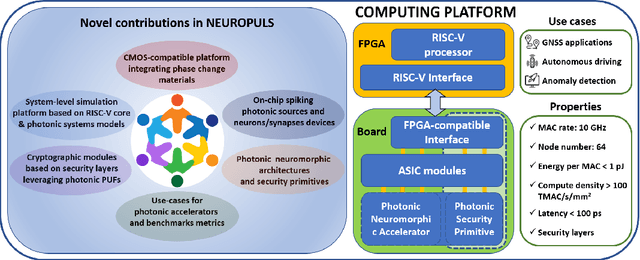
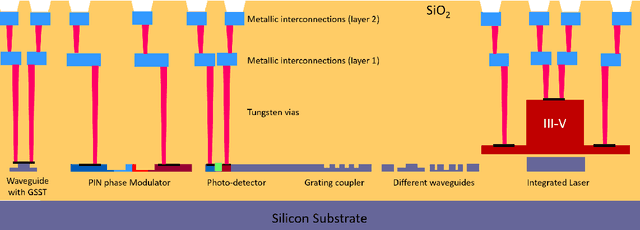
Abstract:This special session paper introduces the Horizon Europe NEUROPULS project, which targets the development of secure and energy-efficient RISC-V interfaced neuromorphic accelerators using augmented silicon photonics technology. Our approach aims to develop an augmented silicon photonics platform, an FPGA-powered RISC-V-connected computing platform, and a complete simulation platform to demonstrate the neuromorphic accelerator capabilities. In particular, their main advantages and limitations will be addressed concerning the underpinning technology for each platform. Then, we will discuss three targeted use cases for edge-computing applications: Global National Satellite System (GNSS) anti-jamming, autonomous driving, and anomaly detection in edge devices. Finally, we will address the reliability and security aspects of the stand-alone accelerator implementation and the project use cases.
Special Session: Neuromorphic hardware design and reliability from traditional CMOS to emerging technologies
May 02, 2023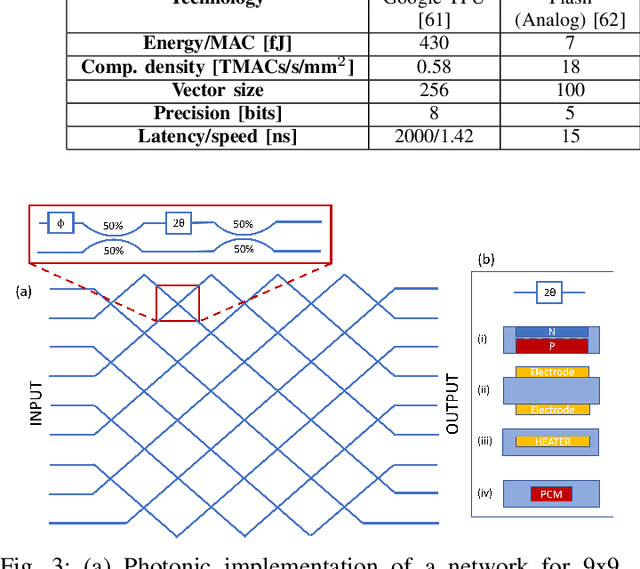
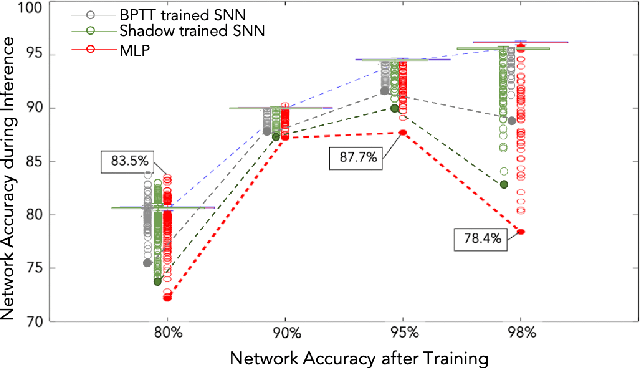
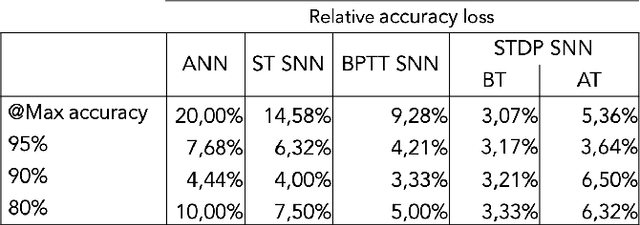

Abstract:The field of neuromorphic computing has been rapidly evolving in recent years, with an increasing focus on hardware design and reliability. This special session paper provides an overview of the recent developments in neuromorphic computing, focusing on hardware design and reliability. We first review the traditional CMOS-based approaches to neuromorphic hardware design and identify the challenges related to scalability, latency, and power consumption. We then investigate alternative approaches based on emerging technologies, specifically integrated photonics approaches within the NEUROPULS project. Finally, we examine the impact of device variability and aging on the reliability of neuromorphic hardware and present techniques for mitigating these effects. This review is intended to serve as a valuable resource for researchers and practitioners in neuromorphic computing.
Inverse Design of Grating Couplers Using the Policy Gradient Method from Reinforcement Learning
Jul 17, 2021

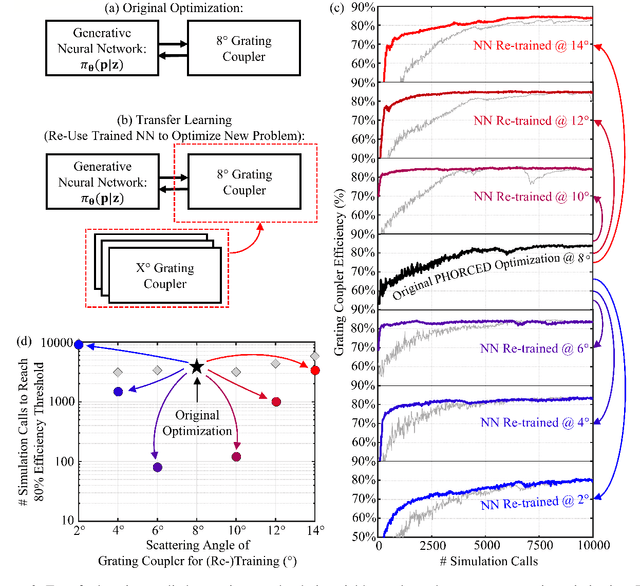

Abstract:We present a proof-of-concept technique for the inverse design of electromagnetic devices motivated by the policy gradient method in reinforcement learning, named PHORCED (PHotonic Optimization using REINFORCE Criteria for Enhanced Design). This technique uses a probabilistic generative neural network interfaced with an electromagnetic solver to assist in the design of photonic devices, such as grating couplers. We show that PHORCED obtains better performing grating coupler designs than local gradient-based inverse design via the adjoint method, while potentially providing faster convergence over competing state-of-the-art generative methods. Furthermore, we implement transfer learning with PHORCED, demonstrating that a neural network trained to optimize 8$^\circ$ grating couplers can then be re-trained on grating couplers with alternate scattering angles while requiring >$10\times$ fewer simulations than control cases.
Towards Trainable Media: Using Waves for Neural Network-Style Training
Sep 30, 2015



Abstract:In this paper we study the concept of using the interaction between waves and a trainable medium in order to construct a matrix-vector multiplier. In particular we study such a device in the context of the backpropagation algorithm, which is commonly used for training neural networks. Here, the weights of the connections between neurons are trained by multiplying a `forward' signal with a backwards propagating `error' signal. We show that this concept can be extended to trainable media, where the gradient for the local wave number is given by multiplying signal waves and error waves. We provide a numerical example of such a system with waves traveling freely in a trainable medium, and we discuss a potential way to build such a device in an integrated photonics chip.
 Add to Chrome
Add to Chrome Add to Firefox
Add to Firefox Add to Edge
Add to Edge